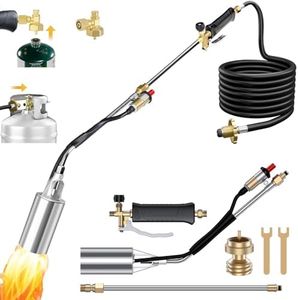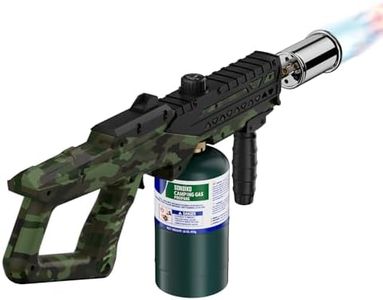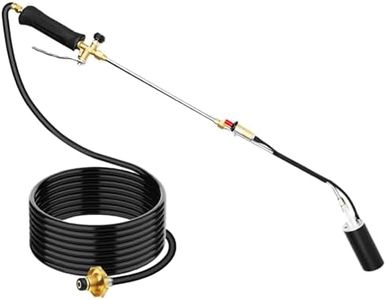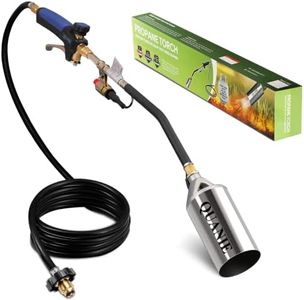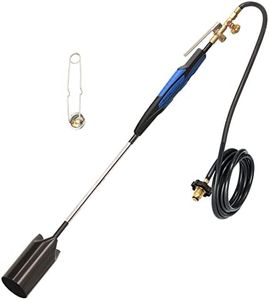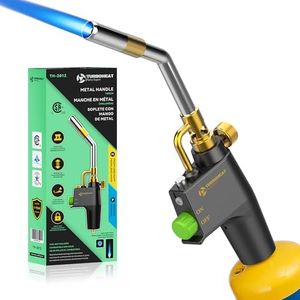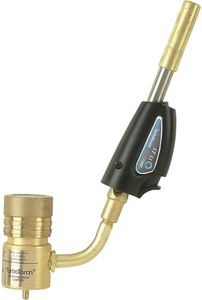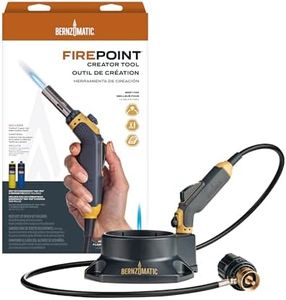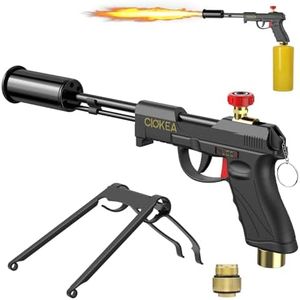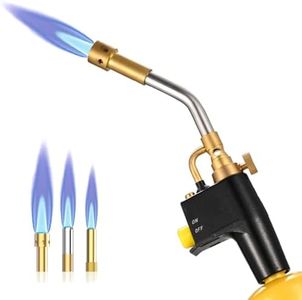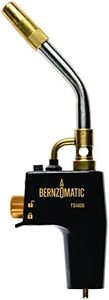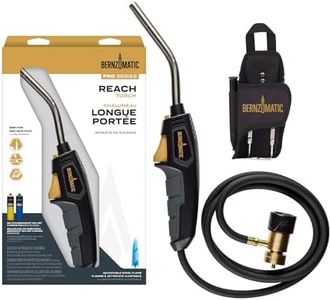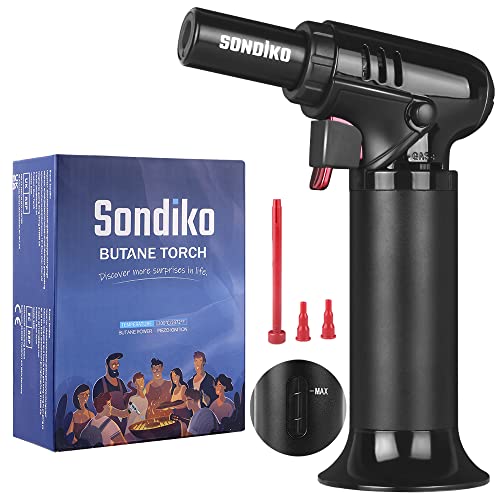We Use CookiesWe use cookies to enhance the security, performance,
functionality and for analytical and promotional activities. By continuing to browse this site you
are agreeing to our privacy policy
10 Best Propane Torches
From leading brands and best sellers available on the web.Buying Guide for the Best Propane Torches
Choosing a propane torch involves understanding the basic features and how they align with the tasks you want to accomplish. Whether you’re soldering pipes, burning weeds, shaping metal, or starting a grill, the right torch can make your work easier and safer. Before picking, think about how often you’ll use it, what projects you want to tackle, and how comfortable you are handling a tool that works with open flame. Matching your needs to the torch’s capabilities ensures you pick a tool that’s reliable and efficient.Flame Type (Adjustable vs. Fixed)Flame type refers to whether you can adjust the size and intensity of the torch’s flame. Adjustable flames are important if you plan to use the torch for a range of jobs, from delicate soldering to heavy-duty brazing, as you can fine-tune the output depending on the task. Fixed flame torches are simpler and suitable for straightforward jobs like starting a grill or light weed burning. When choosing, ask yourself if you'll benefit from flexibility for various projects or if a steady, unchanging flame is all you'll need.
Ignition Method (Manual vs. Automatic)The ignition method describes how the torch lights up. Manual ignition needs a separate spark source, like a lighter, while automatic (usually piezo) ignition lights with the press of a button. Automatic ignition is more convenient and safer, especially if you expect to use the torch often, as it removes the need for extra tools and keeps your hands away from the flame. Manual ignition can be fine for occasional use where convenience is less critical. Think about whether ease and safety are priorities for your planned uses.
BTU Rating (Heat Output)BTU (British Thermal Units) rating measures how much heat the torch can produce. Low BTU torches are designed for small, precision work like jewelry making or electronics, while mid-range BTU output suits plumbing or light cooking, and high BTU torches are built for demanding tasks like brazing thick metal or large-scale weed burning. Consider the toughest job you want to do with your torch; this ensures you select a model that won’t struggle when you need high heat.
Torch Head Size and ShapeThe shape and size of the torch head affect the size and spread of the flame. Small, narrow heads offer precise control and are best for detail work or tight spaces, while larger, wider heads produce a broad flame that’s better for quickly heating bigger areas. Choosing the right head depends on whether your projects need pinpoint accuracy or coverage over large surfaces.
Material and Build QualityThe materials used in the torch, especially in the nozzle and body, determine its durability and heat resistance. Metal-bodied torches last longer and handle higher heat, making them suitable for frequent and rigorous use; plastic-bodied or mixed-material torches might be fine for light, occasional tasks but may wear faster. Pick a torch that suits the intensity and frequency of your planned work to ensure longevity and safe handling.
Compatibility with Propane CanistersTorches are designed to connect to certain types of propane canisters (small disposable bottles versus larger refillable tanks). Knowing what you already have or what’s easiest to buy locally saves hassle later. If you need portability, look for models fitting smaller canisters; if working stationary or doing large jobs, larger tanks can provide longer, uninterrupted use. Choose based on the mobility and runtime your projects demand.
Safety FeaturesImportant safety features include flame control valves, automatic shut-off, anti-flare designs, and heat-resistant handles. These features help prevent accidents, make operation easier, and keep you safe during use and storage. If you’re new to torches or will use it in varied environments, choosing a model loaded with safety features is always a smart idea.
